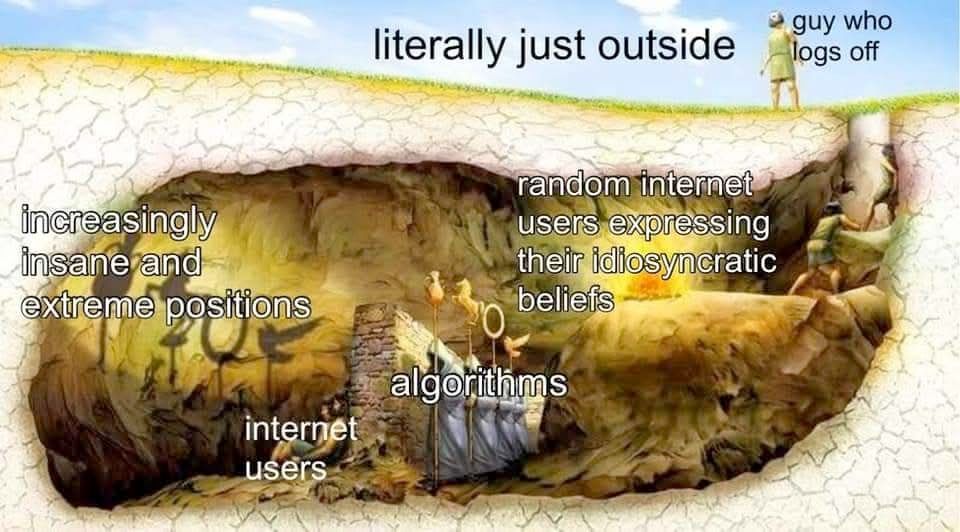
Plato's Cave allegory, illustrated. the shadows on the cave wall are captioned "increasingly insane and extreme positions", the prisoners labeled "internet users", the figures holding the shadow's shapes labeled "algorithms", the fire labeled "random internet users expressing their idiosyncratic beliefs". the space above the cave is labeled "literally just outside" and the philosopher freed from the chains of the physical world labeled "guy who logs off"
from "Classical Studies memes for Hellenistic teens" on FB
10.06.2025 19:57 — 👍 6772 🔁 1238 💬 73 📌 68
James Swanson, one of the earliest researcher who promoted amphetamines in the 90’, in this piece by @nytimes.com on a.d.h.d. and stimulants. “there is no long-term effect. The only long-term effect that I know of has been the suppression of growth.“
www.nytimes.com/2025/04/13/m...
13.04.2025 15:56 — 👍 0 🔁 0 💬 1 📌 1
However, these results are contingent on whether the task features can be decoded. Activity-silent, or 'bursts' of proactive processes sprinkled in the ITI and not time-locked to the stimulus, may not appear with our method. Therefore, the proactive unicorn is still galloping even in our task.
22.01.2025 18:47 — 👍 2 🔁 0 💬 1 📌 0
I'll plug this in: we run the Multi task with EEG and, adapting Kikumoto's decoding+RSA method, we can see a change in distractors' coding compatible with the distractor-specific adaptation reported in our recent NHB. This 'looks' like reactive, given it shows up 500ms post-stimulus.
22.01.2025 18:47 — 👍 2 🔁 0 💬 1 📌 0
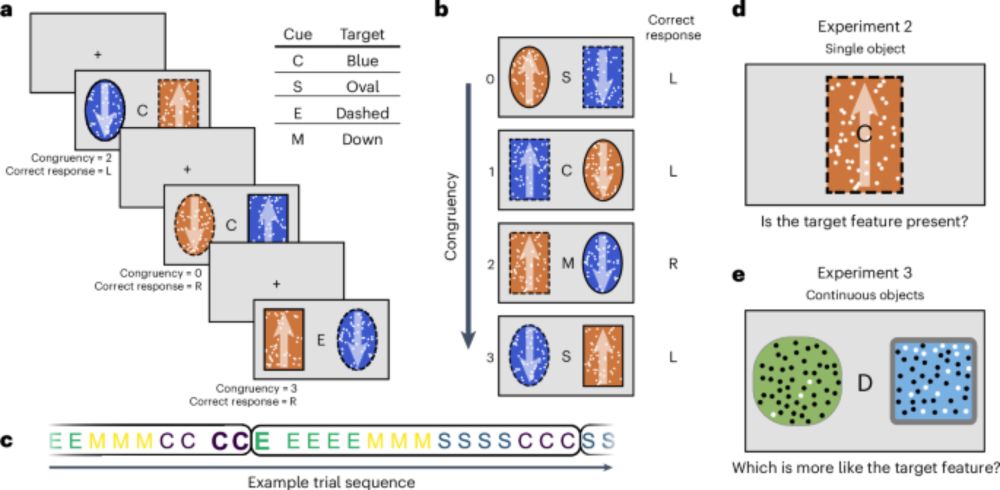
Distractor-specific control adaptation in multidimensional environments - Nature Human Behaviour
Gheza and Kool show that, in multidimensional environments, people allocate attention to individual distractors on the basis of their interference with the current task. They develop a neural model th...
Three new CDML publications to start off 2025!
First up: research on multidimensional control from @davideghez.bsky.social in @naturehumbehav.bsky.social! Across three behavioral experiments and with computational modeling, Davide shows that people adapt control in a distractor-specific fashion.
07.01.2025 10:36 — 👍 17 🔁 9 💬 2 📌 0
This is awesome! Congratulations!!
06.01.2025 05:21 — 👍 1 🔁 0 💬 0 📌 0
We've got an excellent line-up in both philosophy and neuroscience for our first conference! Submit your abstracts by Feb 1 and join us in St. Louis in early May!
05.01.2025 19:53 — 👍 22 🔁 7 💬 0 📌 0
It's out!
Our work on multi-dimensional control adaptation landed on @naturehumbehav.bsky.social
Free access to the full text here: rdcu.be/d5pt1
Big shout-out to @wouterkool.bsky.social for sharing the venture and for setting the bar that high in mentorship!
For a quick recap, linked thread
06.01.2025 00:49 — 👍 19 🔁 9 💬 0 📌 0
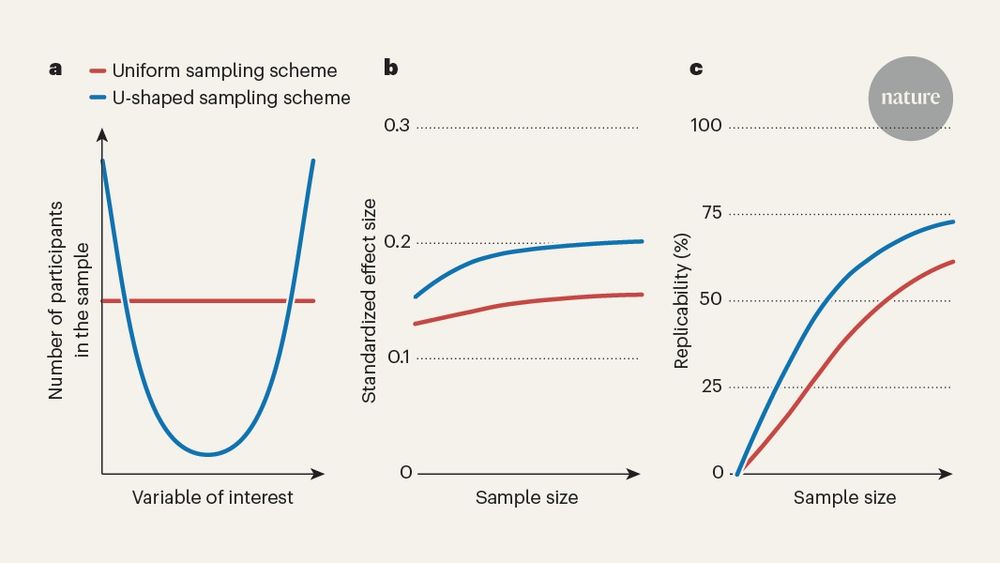
Design tips for reproducible studies linking the brain to behaviour
Sampling schemes for reproducible brain-wide association studies.
Great conversations with @ndosenbach.bsky.social while preparing this Nature News & Views on the new Kang et al. Ready to have the same with everyone here. Thoughts? What other practice should be investigated to help BWAS reproducibility?
www.nature.com/articles/d41...
27.11.2024 18:06 — 👍 45 🔁 14 💬 2 📌 4

#psynom24 is coming up. On Fri 22nd I will be talking about cognitive control with multiple distractors, including ↓
Hold your amphibians!
13.11.2024 21:24 — 👍 5 🔁 2 💬 0 📌 0
Some resources i've curated for the cognitive and computational neuroscience communities on bluesky! First, a twin set of starter packs. go.bsky.app/2n84SRM
13.11.2024 06:39 — 👍 122 🔁 40 💬 18 📌 3
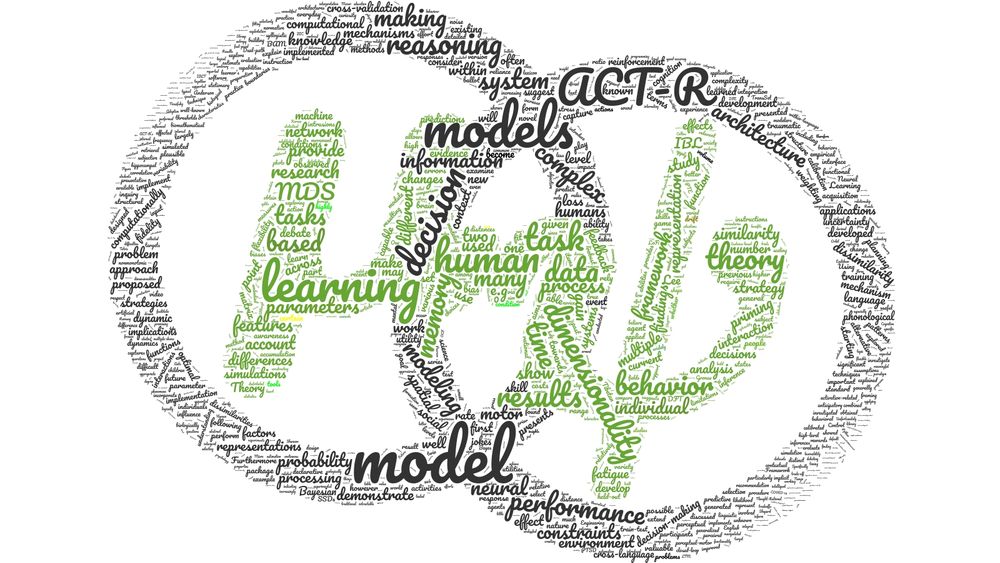
Society for Mathematical Psychology
Online conferences, news, membership functions, and information about the Society
The *registration* for this year's satellite meeting of the Society of Mathematical Psychology at Psychonomics in New York City will *close Sunday, November 10!* If you plan to attend, register by Sunday for free on the meeting website: mathpsych.org/conference/17/
08.11.2024 10:15 — 👍 7 🔁 7 💬 1 📌 0
Overall, this suggests that attentional gains for multiple sources of information can be adapted in parallel.
This opens the questions of how ‘multidimensional’ conflict is represented in the brain.
Check out the discussion of our preprint for some speculation.
17.10.2023 22:49 — 👍 1 🔁 0 💬 0 📌 0

With a neural network model, we show that you need multiple, distractor-specific conflict monitors.
17.10.2023 22:49 — 👍 1 🔁 0 💬 1 📌 1
In short, humans can simultaneously adapt attention towards multiple sources, based on their individual ‘compatibility’ history.
(Lasagne never helped writing a great epitaph. Life stories did)
17.10.2023 22:49 — 👍 0 🔁 0 💬 1 📌 0

We observe within-dimension adaptation, but absence of cross-dimension adaptation.
Put simpler, participants adapted attention to a given dimension based selectively on the congruency history of that dimension with the cued task.
17.10.2023 22:48 — 👍 0 🔁 0 💬 1 📌 0
a.k.a. ‘spaghetti plot’. It would be lame if it wasn’t how we actually refer to this effect.
17.10.2023 22:47 — 👍 0 🔁 0 💬 1 📌 0
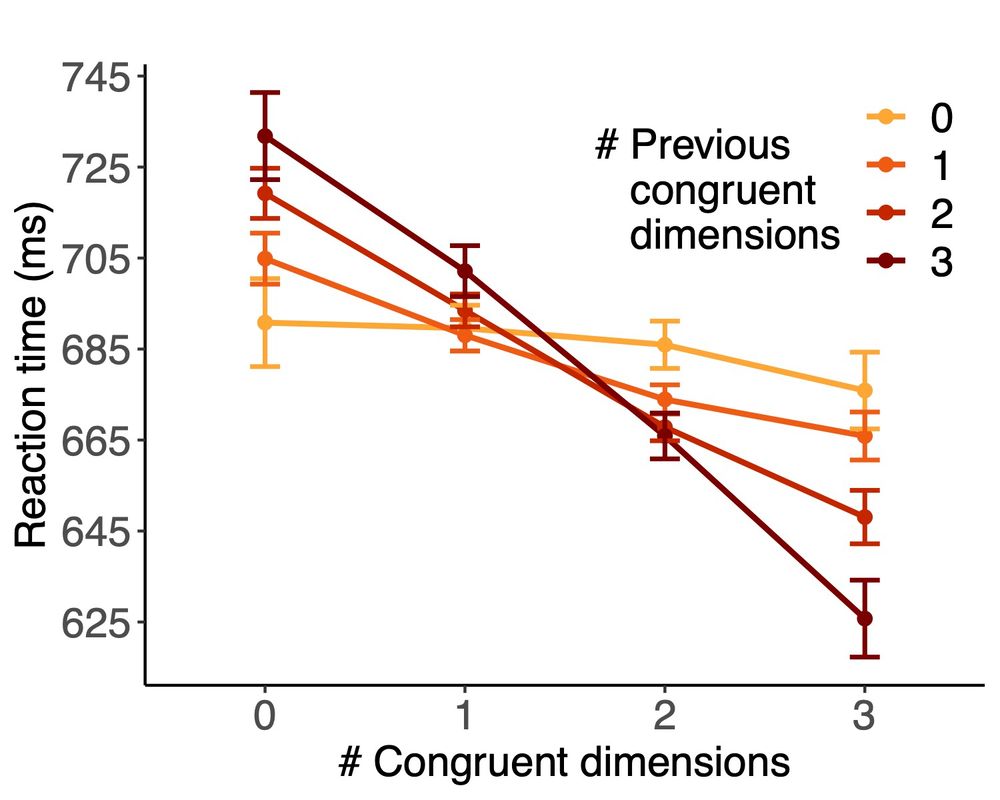
Control adaptation in the MULTI produces parametric congruency sequence effects.
You are robust to congruency effects the more you have been previously exposed to incongruence (flatter, lighter lines).
(Check out @hritz.bsky.social’s new paper for a related, convergent, finding!)
17.10.2023 22:47 — 👍 0 🔁 0 💬 1 📌 0
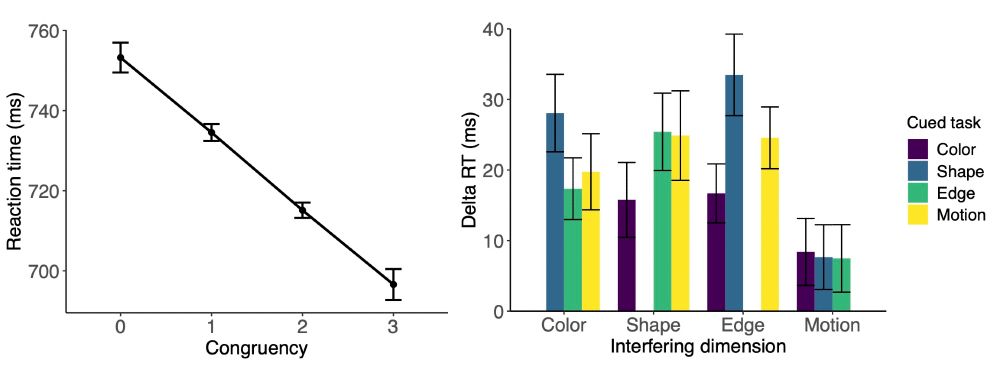
The congruency of non-cued dimensions spans from 0 (all incongruent) to 3 (all congruent). This leads to parametric effects on responses to the cued dimension.
Also, interference comes from everywhere: Any non-cued dimension interfere with any cued task (as in the best families).
17.10.2023 22:46 — 👍 0 🔁 0 💬 1 📌 0
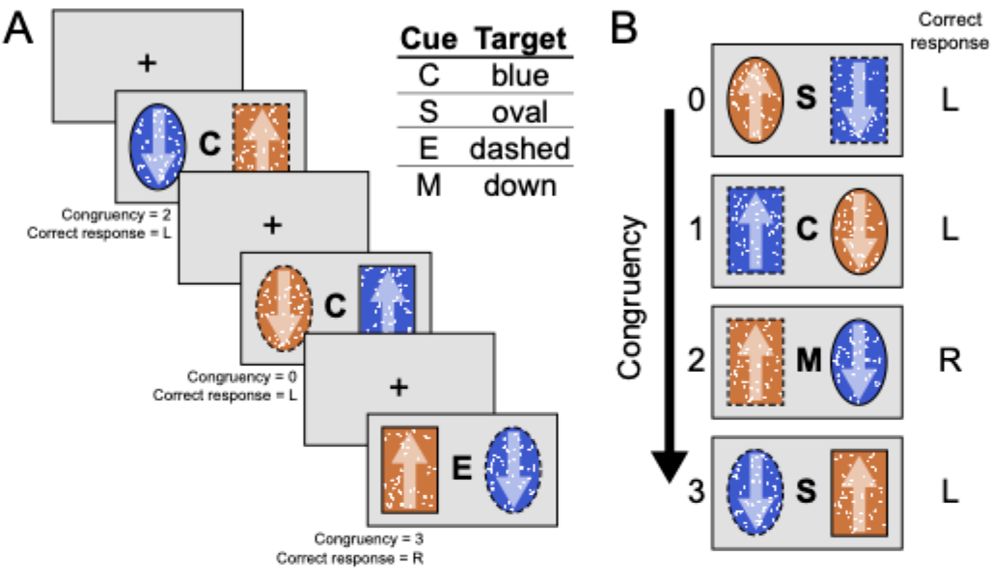
In our new MULTI paradigm, two stimuli differ across 4 dimensions. Your need to find the instructed feature for a given cued dimension (aka ‘write the epitaph’).
The three other dimensions can either facilitate or interfere (i.e., your sister and your aunt).
17.10.2023 22:45 — 👍 0 🔁 0 💬 1 📌 0
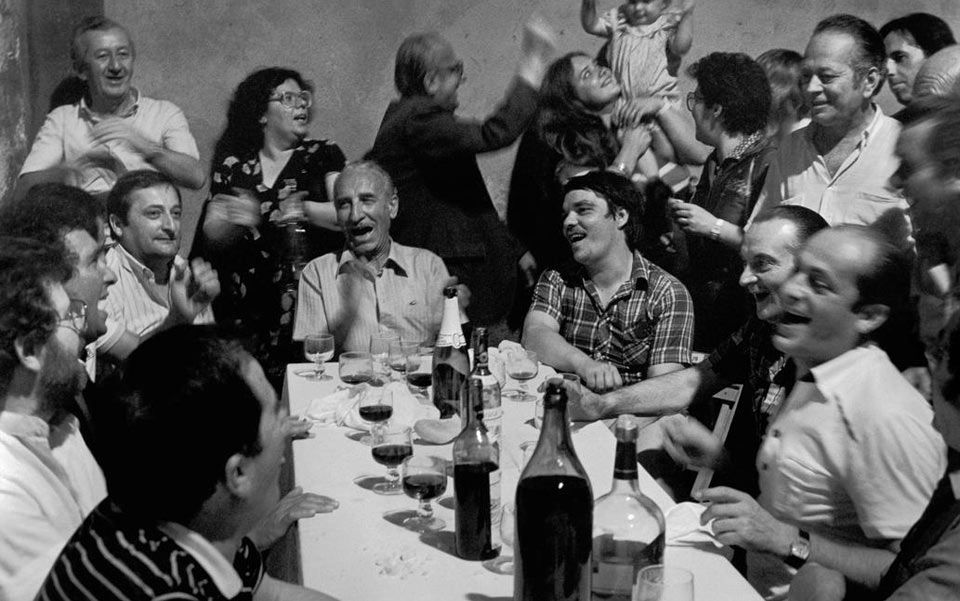
Families can be large.
Could you compose your cousin's epitaph while your sister shares his life stories, and also suppress your aunt’s push for more lasagne?
17.10.2023 22:45 — 👍 0 🔁 0 💬 1 📌 0

Distractor-specific control adaptation in multidimensional environments
bioRxiv - the preprint server for biology, operated by Cold Spring Harbor Laboratory, a research and educational institution
New preprint!
www.biorxiv.org/content/10.1...
Our environments are complex and ever changing. We report behavioral data and neural network simulations showing that, in multidimensional environments, humans adapt attentional control in a dimension-specific way.
w/ @wouterkool.bsky.social
↓ 1/11
17.10.2023 22:44 — 👍 13 🔁 4 💬 1 📌 0
PhD student in the Object Vision Group at CIMeC, University of Trento. Interested in neuroimaging and object perception. He/him 🏳️🌈
https://davidecortinovis-droid.github.io/
See https://tenuretracker.info/ for the most complete & worldwide overview of open postdoc, tenure track, (junior) professor, and lecturer positions.
Visit the site to search for specific positions and subscribe to email notifications
Writer. Lifelong Democrat. Devil's Advocate. My spirit animal is the shrew. Unofficial historian of the Resistance. People call me Shooti.
Cognitive scientist at Stanford. Open science advocate. Symbolic Systems Program director. Bluegrass picker, slow runner, dad. http://langcog.stanford.edu
Democratic Nominee for Mayor of NYC. Assemblymember. Running to make this city affordable. Democratic Socialist. Early Voting: 10/25 - 11/2. Election Day: 11/4. zohranfornyc.com
Husband | Dad to Nelson, Cricket & Hank | Congressman |@HouseJudiciary @HomelandDems | social media policy:bit.ly/3gxdzVm | #EndGunViolence
DC. political philosopher at Georgetown. rhythm guitarist + vox for @femiandfoundation.bsky.social. Spurs fan #COYS
This is the official Bluesky account for the School of Psychology, Trinity College Dublin, the University of Dublin. For more see https://www.tcd.ie/psychology/
Neuroscientist, statistician, programmer, and dad in St. Louis, Missouri
Official Bluesky account for NOAA's National Weather Service.
Your Only Source For Professional Dog Ratings
nonprofit: @15outof10.org ❤️🩹
links.weratedogs.com
Associate Professor (he/him)
University of Missouri, Columbia
https://gaspelinlab.missouri.edu
https://gaspelinblog.wordpress.com
attention | vision | eye movements | ERPs
👩🏻💻 Postdoc at the University of Missouri
🧠 visual attention and distractor inhibition
Enthusiast. Cognitive Psychologist.
Control, Attention, Memory, and Performance (CAMP) Lab at Berry College ( https://sites.google.com/view/jacksoncolvett/ )
(He/him/his)
Neuroscientist post-doc working with Nico Dosenbach at Washington University in St. Louis
Postdoc at Chicago Booth.
Researching cognitive costs and cognitive effort aversion.
www.jakeembrey.com
Lab manager with @alexatompary.bsky.social at Drexel. semantic & episodic memory / language
MA psych at NYU.
BA psych/stats at UW-Madison.
Wu/Mandarin/English/French
Undergraduate student studying cognitive neuroscience & biology @Washington University in St. Louis















